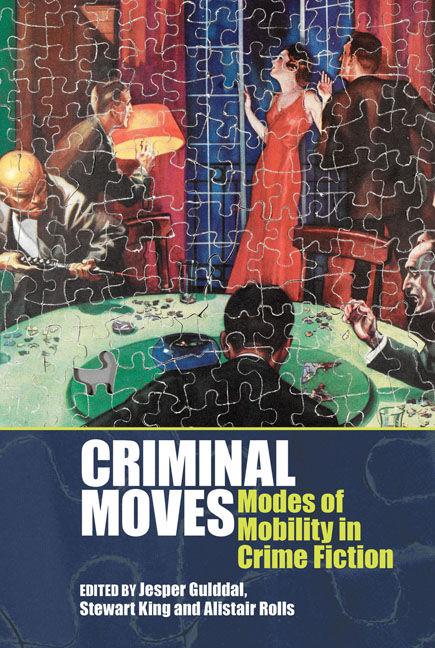6 - Foggy Muddle: Narrative, Contingency and Genre Mobility in Dashiell Hammett's The Dain Curse
Summary
In a little-noted episode in Dashiell Hammett's The Dain Curse (1928/29), the anonymous detective (the ‘Op’), the ill-starred Gabrielle Leggett and Eric Collinson, her fiancé, are involved in a dramatic, although ultimately harmless, car accident. Having rescued the young woman, a drug addict, from the eerie Temple of the Holy Grail, the Op wants to take her home in Collinson's Chrysler. The fiancé, however, in a state of near panic, has misgiving about returning Ms Leggett to her father and stepmother, preferring to have her examined by a doctor. When the detective insists, trying first to grab the wheel and then proceeding to curse the young man ‘bitterly, fairly thoroughly, and from the heart’ (Hammett 1999: 230), Collinson speeds up the vehicle and eventually loses control when swerving to avoid a sedan at an intersection:
Collinson did what he could, giving the roadster its head, going with the skid, but the corner curb wouldn't co-operate. It stood stiff and hard where it was. We hit it sidewise and rolled over on the lamp-post behind it. The lamp-post snapped, crashed down on the sidewalk. The roadster, over on its side, spilled us out around the lamp-post. Gas from the broken post roared up at our feet. (231)
In an insightful study, Inka Mülder-Bach has positioned the traffic accident as ‘a key scene of modernity’, connecting the modernist interest in accidents to contemporary discourses of risk and trauma while also reading it as a means of representing the modern world from the point of view of its discontinuities and contingences (2000: 198–99). The scene in The Dain Curse – one of two car crashes in this novel – exemplifies this logic. A critic looking for meaning and purpose might suggest that the brief account of the accident, apart from adding another piece of action, highlights the contrast between the two aspiring protectors of Miss Leggett, that is, between Collinson's timidness and the Op's uncouth but capable masculinity. In strictly narrative terms, though, the car crash has no discernible function and could have been edited out without materially affecting the overall plot. Unconnected in this manner, it instead takes on emblematic significance.
- Type
- Chapter
- Information
- Criminal MovesModes of Mobility in Crime Fiction, pp. 113 - 128Publisher: Liverpool University PressPrint publication year: 2019



